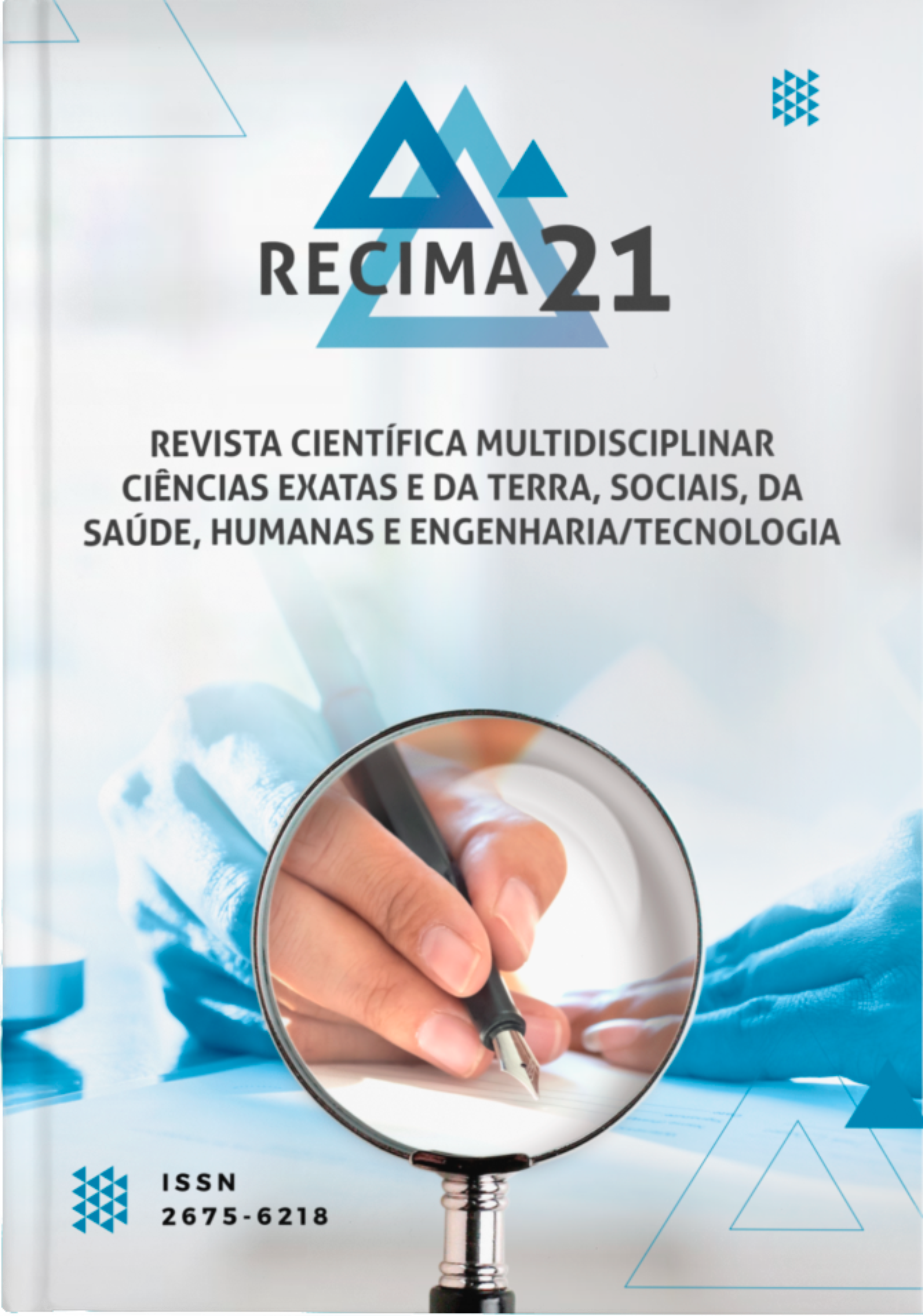ROLE OF WOOD IN THE AGING OF CACHAÇA
DOI:
https://doi.org/10.47820/recima21.v2i8.682Keywords:
cachaça, aging, phenolicsAbstract
Prolonged storage in wooden barrels (aging) is a procedure that integrates the production of numerous distilled beverages, and markedly affects their sensory characteristics. Among other molecular changes, it is known that, at this stage, beverages absorb phenolic compounds, especially bioactive monomers and dimers present in the fraction referred to as wood extractives. These phenolics occur in variable structures and proportions in each type of wood and can both incorporate nutritional value (especially due to their antioxidant function) and potentially toxic effects on health. In Brazil, the aging of cachaça is optional but widely performed, using numerous different types of wood. In this article, selected data from recent literature are gathered, which point to the need for a specific deepening, both in the scope of research and in the current legislation, enabling the insertion of appropriate chemical criteria for the characterization and certification of the aging of Brazilian cachaça.
Downloads
References
ADEBOYE, P.T., BETTIGA, M. & OLSSON, L. (2014).The chemical nature of phenolic compounds determines their toxicity and induces distinct physiological responses in Saccharomyces cerevisiae in lignocellulose hydrolysates. AMB Expr. 4 (46). DOI:10.1186/s13568-014-0046-7.
ALLISON, S.K., FOX, J.P., HARGREAVES, R.; BATES, S.P. (2005). Clustering and microimmiscibility in alcohol-water mixtures: Evidence from molecular-dynamics simulations Physical. Review B, 71(2). DOI: 10.1103 / physrevb.71.024201
AQUINO, F.W.B. (2004). Determinação de compostos fenólicos em extratos de Amburana cearensis e em aguardentes de cana envelhecidas no Ceará. Fortaleza, UFC, Dissert. Mestrado.
ARAÚJO, A. C. C. (2015). Composição química monomérica da lignina da madeira de Eucalyptus spp. para produção de carvão vegetal. Lavras, UFLA, Dissert. mestrado.
BODE, A.M. & & DONG, Z. (2014). Toxic phytochemicals and their potential risks for human cancer. Cancer Prevention Research, 8 (1), 1-8. DOI:10.1158/1940-6207.capr-14-0160
BRÄNNVALL, E., & REIMANN, A. (2018). The balance between alkali diffusion and alkali consuming reactions during impregnation of softwood. Impregnation for kraft pulping revisited. . Holzforschung, 72 (3), 169-178. DOI: 10.1515 / hf-2017-0078
MAPA (2021). Portaria 339 de 28/06/21: Submete à Consulta Pública pelo prazo de 75 (setenta e cinco) dias a contar da data de publicação desta Portaria, a minuta de Portaria e respectivo Anexo que estabelece os Padrões de Identidade e Qualidade da aguardente de cana e da Cachaça e revoga atos normativos com matérias pertinentes. DOU, 120, seção 1, p.14.
CALEJA, C.; RIBEIRO, A.; BARREIRO, M.F., FERREIRA, I.C.F.R. (2017). Phenolic compounds as nutraceuticals or functional food ingredients. Curr Pharm Des., 23 (19): 2787-2806.
DAS, A.K.; ISLAM, M.N.; FARUK, M.O.; ASHADUZZAMAN, M.; DUNGANI, R. (2020). Review on tannins: extraction processes, applications and possibilities. South African Journal of Botany, 135: 58-70.
DEL RIO, D.; MATEOS, A.R.; SPENCER, J.P.E, TOGNOLINI,M., BORGES, G.; CROZIER, A. (2013). Dietary (poly)phenolics in human health: structures, bioavailability, and evidence of protective effects against chronic diseases. Antioxid. & Redox Signaling, 18 (14), 1818–1892. DOI:10.1089 / ars.2012.4581
FERREIRA, V.; ORTEGA, L.; ESCUDERO, A. (2000). A comparative study of the ability of different solvents and adsorbents to extract aroma compounds from alcoholic beverages. J. Chromat. Science 38(11):469-76. DOI:10.1093/chromsci/38.11.469
FUJIEDA,M.; TANAKA,T.; SUWA,Y.; KOSHIMIZU,S.; KOUNO,I. (2008). Isolation and structure of whiskey polyphenols produced by oxidation of oak wood ellagitannins. J. Agric. Food Chem., 56: 7305-7310. 10.1021/jf8012713 CCC
HUTZLER,P.; FISCHBACH,R., HELLER,W., JUNGBLUT, T.P.; REUBER,S.; SCHMITZ, R.; VEIT,M.; WEISSENBÖCK, G.; SCHNITZLER,J.P. (1998). Tissue localization of phenolic compounds in plants by confocal laser scanning microscopy. J. Experimental Botany, 49 (323): 953–965.
IGNAT, I., VOLF, I., POPA, V.I. (2013) Analytical Methods of Phenolic Compounds. In: Ramawat K., Mérillon, J.M. (eds) Produtos naturais. Springer, Berlim, Heidelberg. DOI:10.1007/978-3-642-22144-6_56
KHODDAMI, A.; WILKES, M.A.; ROBERTS, T.H. (2013). Techniques for Analysis of Plant Phenolic Compounds. Molecules, 18(2): 2328-75. DOI:10.3390/molecules18022328
KLOCK,U.; MUNIZ, G.I.B.; HERNANDEZ, J.A.; ANDRADE, A.S. (2005). Química da Madeira. Curitiba, UFPR, http://marioloureiro.net/ciencia/biomass/quimicadamadeira.pdf
KYSELOVA, Z. (2011). Toxicological aspects of the use of phenolic compounds in disease prevention. Interdiscip. Toxicol., 4 (4): 173–183. DOI:10.2478/v10102-011-0027-5
LIU, F.; CHEN, J.; CHAI, J.; ZHANG, X; BAI, X. H.; ROUBIK, D.W. (2007). Adaptive functions of defensive plant phenolics and a non-linear bee response to nectar componentes. Functional Ecology, 21 (1): 96-100. https://www.jstor.org/stable/4139390
LIU,Q.; LUO,L.; ZHENG, L. (2018). Lignins: Biosynthesis and Biological Functions in Plants. Int. J. Mol. Sci., 19(2): 335. DOI: 10.3390/ijms19020335
LOH, W.; TONEGUTTIT, C.A.; VOLPE, P.L.O. (1993). Diffusion coefficients of aqueous phenols determined by the Taylor dispersion technique. J. Chem. Soc. Faraday Trans., 89(1), 113-118
MACHMUDAH, S.; WAHYUDIONO, KANDA, H.; SASAKI,M.; GOTO,M. (2015). Hot Compressed Water Extraction of Lignin by Using a Flow-Through Reactor . Eng. Journal, 19 (4). DOI:10.4186/ej.2015.19.4.25
MAIA, A.B.; CAMPELO, E.P. (2006). Tecnologia da cachaça de alambique. Belo Horizonte, Fiemg/SindBebidas.
MAIA, A.B.; MARINHO, L.S.; NELSON, D.L. (2020). Certification of amburana in the aging of cachaça. (2020). Res. Soc. Development, 9 (12). DOI:10.33448/rsd-v9i12.10644
MOSEDALE, J. (1995). Effects of oak wood on the maturation of alcoholic beverages with particular reference to the whisky. DOI: 10.1093/forestry/68.3.203
NAJJAR, N.E.; MUHTASIB, H.G.; RA, K.; VUORELA, P.; URTTI, A.; VUORELA, H. (2011). The chemical and biological activities of quinones: overview and implications in analytical detection. Phytochemistry Reviews, 10 (3), 353-370. DOI:10.1007/s11101-011-9209-1
NASCIMENTO, M. S.; SANTANA, A. L. B. D., MARANHÃO, C.A.; OLIVEIRA, L.S.; BIEBER,L. (2013). Phenolic extractives and natural resistance of wood. DOI: 10.5772/56358.
PETTERSEN, RC (1984). The Chemical composition of wood. The Chemistry of Solid Wood, 57-126. DOI: 10.1021 / ba-1984-0207.ch002
POLJANŠEK, I.; VEK, V.; PRIMOZ, F. (2015). Development of the HPLC method for separation of some phenolic compounds of wood. DOI: 10.20315 / ASetL.108.2
SHADNIA, H. & WRIGHT, J.S. (2008). Understanding the toxicity of phenols: using quantitative structure−activity relationship and enthalpy changes to discriminate between possible mechanisms. Chemical Research in Toxicology, 21 (6), 1197-1204. DOI:10.1021/tx800058r.
SJÖESTRÖM, E. (1993). Wood Chemistry: Fundamentals and Applicationd. 2 ed. New York, Acad. Press.
ISBN 9780080925899.
SOTO-VACA,A.; GUTIERREZ,A.; LOSSO,J.L.; XU, Z.; FINLEY, J.W. (2012). Evolution of phenolic compounds from color and flavor problems to health benefits. J. Agric. Food Chem., 60: 6658-6677. DOI:10.1021/jf300861c
TIAN, D., CHANDRA, R.P., LEE, J.S. LU, C.; SADLER, J.N. (2017). A comparison of various lignin-extraction methods to enhance the accessibility and ease of enzymatic hydrolysis of the cellulosic component of steam-pretreated poplar. Biotechnol Biofuels, 10 (157). DOI:10.1186/s13068-017-0846-5
VICENTE,C.D. (2011) Determinação de compostos fenólicos, congêneres, contaminantes, carbamato de etila e capacidade antioxidante em cachaças no processo de envelhecimento em barris de diferentes madeiras. Maceió, Alagoas, UFAL. Tese dout.
ZHANG,B.; CAI,J.; DUAN,C.Q.; REEVES,M.J.; HE,F. (2015). A review of polyphenolics in oak woods. Int. J. Mol. Sci., 16: 6978-7014. DOI:10.3390/ijms16046978.
Downloads
Published
How to Cite
Issue
Section
Categories
License
Copyright (c) 2021 RECIMA21 - Revista Científica Multidisciplinar - ISSN 2675-6218

This work is licensed under a Creative Commons Attribution 4.0 International License.
Os direitos autorais dos artigos/resenhas/TCCs publicados pertecem à revista RECIMA21, e seguem o padrão Creative Commons (CC BY 4.0), permitindo a cópia ou reprodução, desde que cite a fonte e respeite os direitos dos autores e contenham menção aos mesmos nos créditos. Toda e qualquer obra publicada na revista, seu conteúdo é de responsabilidade dos autores, cabendo a RECIMA21 apenas ser o veículo de divulgação, seguindo os padrões nacionais e internacionais de publicação.

 Clique para ver detalhes
Clique para ver detalhes 











